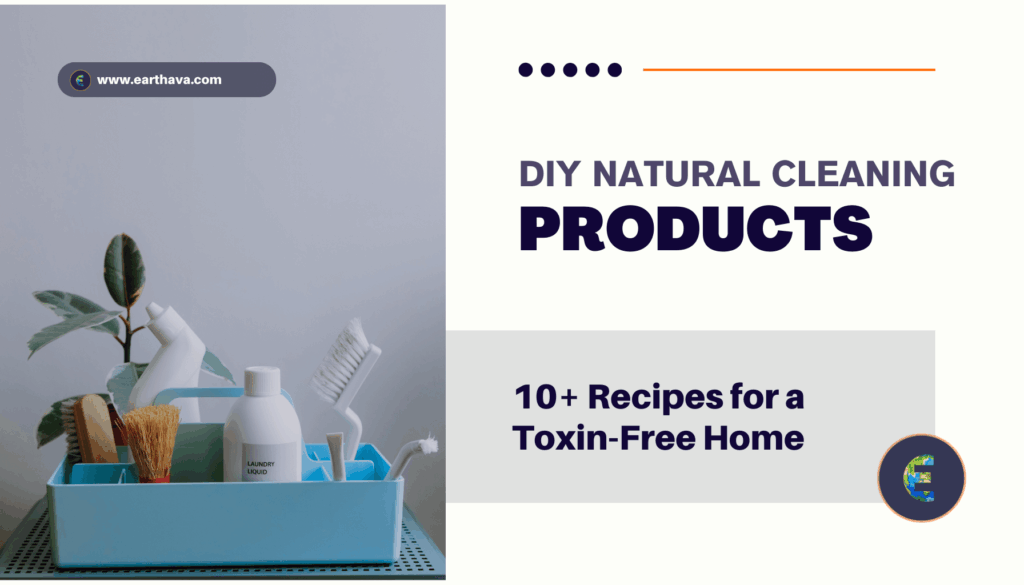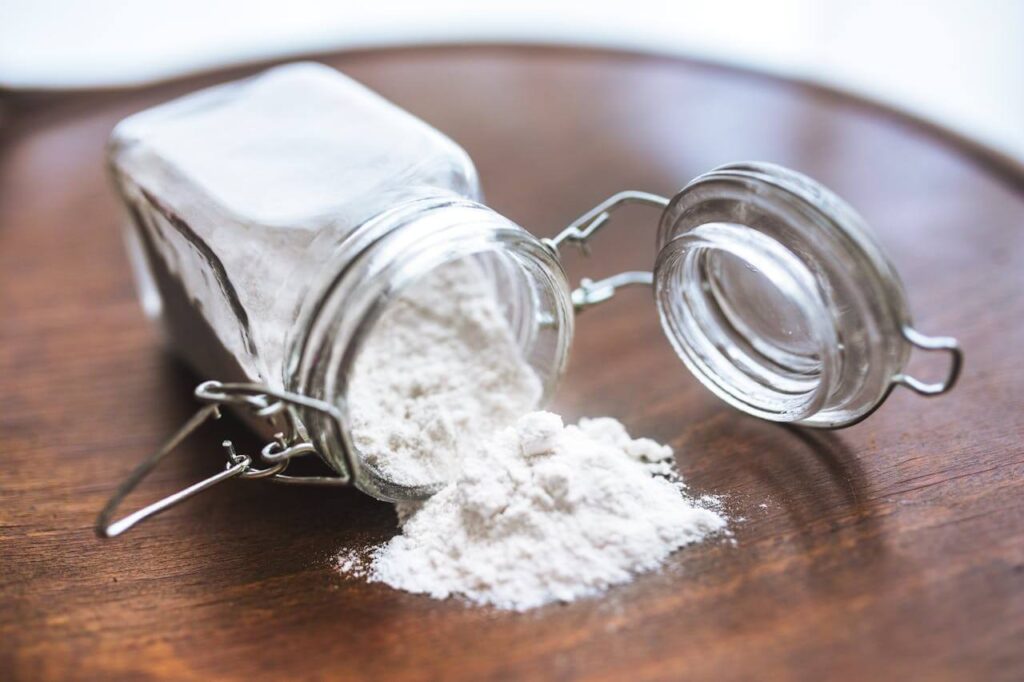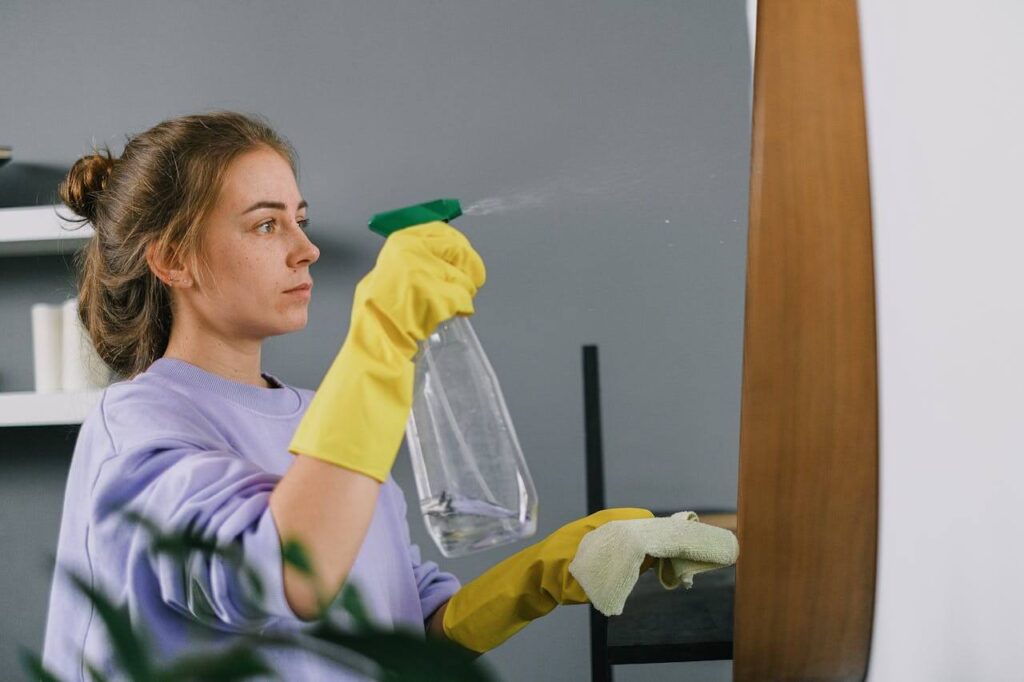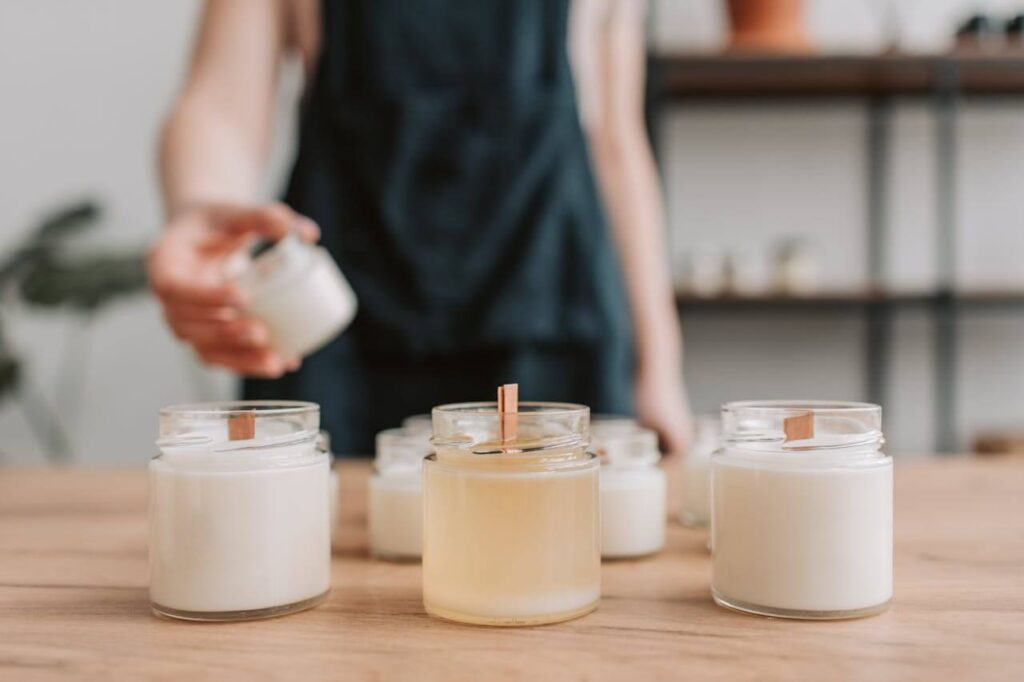Switching to DIY natural cleaning products can transform your household into a safer, eco-friendly space. Many conventional cleaners contain harsh chemicals, but simple pantry staples like vinegar and baking soda offer powerful, budget-friendly alternatives. We’ve tested these recipes for years, ensuring they’re effective and safe for families and pets.

Making small changes will reduce environmental harm while keeping your home spotless. Whether you’re tackling countertops or floors, these methods align with EPA guidelines, minus the toxins. Let’s create a healthier living space together!
Key Takeaways
- Conventional cleaners often contain harmful chemicals.
- Pantry staples like vinegar and baking soda work effectively.
- Homemade solutions are safer for families and pets.
- Eco-friendly options reduce environmental impact.
- Small changes can lead to a toxin-free home over time.
Why Switch to DIY Natural Cleaning Products?
Every spray bottle in your cabinet could be releasing toxins into your home. The EPA found that commercial cleaners emit 2–5x more volatile organic compounds (VOCs) than homemade alternatives. These chemicals linger on surfaces and in the air, impacting your family’s health.
Synthetic fragrances often contain phthalates, endocrine disruptors linked to hormone imbalances. A University of Georgia study confirms citric acid (found in lemons) kills 99% of bacteria, proving natural doesn’t mean weak.
Cost matters too. A gallon of vinegar solution costs $0.25, while store brands average $5. One family reported a 73% reduction in allergy symptoms after switching.
Microplastics from detergent pods pollute waterways, and the CDC warns against mixing ammonia and bleach. Meanwhile, NIH research shows tea tree oil fights mold as effectively as bleach. The EPA’s Safer Choice program even approves borax for tough jobs.
Switching isn’t just eco-friendly, it’s a safeguard. With simple ingredients, you protect your household and the planet. Ready to make the change?
Essential Ingredients for DIY Natural Cleaning Products
The right ingredients can turn everyday items into powerful, eco-conscious cleaners. With a few pantry staples, you’ll tackle grime safely and effectively. Let’s explore the science-backed stars of toxin-free cleaning.

Vinegar: The Multi-Purpose Cleaner
White vinegar’s 5–8% acetic acid concentration dissolves mineral deposits and kills 82% of mold spores. Mix 1 cup vinegar with 1 cup water for a streak-free glass cleaner. Avoid using it on natural stone, as it can etch surfaces over time.
Baking Soda: Gentle Abrasive and Deodorizer
With a pH of 8.1, baking soda neutralizes odors while its fine crystals scrub without scratches. Sprinkle it on carpets before vacuuming or combine with 3 drops of lemon oil for a fresh scent.
Essential Oils: Fragrance and Disinfection
Tea tree oil fights mold like bleach, while citrus oils inhibit 99.6% of E. coli. Add 10 drops to your solutions for antimicrobial power. Store oils in dark bottles to preserve potency.
For tough stains, borax activates enzymes in warm water. Always wear gloves with washing soda, its caustic properties demand caution. With these ingredients, every spray bottle becomes a force for good.
DIY Natural Cleaning Products for the Kitchen
Your kitchen deserves the same toxin-free care as the rest of your home. Countertops, sinks, and appliances face daily grime, but harsh chemicals aren’t the answer. We’ve crafted simple recipes using pantry staples to keep this high-traffic area sparkling and safe.
All-Purpose Cleaner Recipe
This versatile solution cuts through grease and disinfects surfaces. Mix ½ cup white vinegar with 2 tablespoons baking soda in a spray bottle, then add 10 drops of essential oil (like lemon or tea tree) for freshness. The vinegar’s acidity breaks down residue, while baking soda neutralizes odors.
For glass surfaces, swap vinegar with 1 cup distilled water and 1 tablespoon cornstarch to prevent streaks. Test on a small area first, natural stone requires pH-neutral alternatives.
Homemade Dish Soap and Dishwasher Detergent
Commercial dish soap often contains synthetic fragrances. Try this gentler version: combine ¼ cup liquid castile soap, 1 tablespoon washing soda, and 5 drops essential oil. It fights grease without skin irritation.
For dishwashers, mix 1 cup salt, 2 cups baking soda, and 2 cups borax. Add 1 teaspoon citric acid to combat hard water spots. This blend outperforms many store-bought pods.
Oven and Drain Cleaning Solutions
Baked-on spills? Make a paste with ½ cup baking soda and 3 tablespoons water. Spread it overnight, then spray with vinegar to lift residue. For drains, pour ½ cup baking soda followed by 1 cup vinegar; the fizzing action clears clogs naturally.
These kitchen-tested formulas prove that effective cleaning doesn’t require toxic chemicals. A spray bottle of homemade solution saves money and reduces plastic waste, one wipe at a time.
Natural Bathroom Cleaners
Bathrooms harbor hidden germs, but harsh chemicals aren’t the only solution. With a few pantry staples, you can tackle soap scum, mildew, and limescale safely. These recipes prioritize effectiveness while protecting your family and surfaces.
Toilet Bowl Cleaner with Citric Acid
Surprisingly, a Kool-Aid lemonade packet delivers citric acid’s cleaning power. Mix it with 1/4 cup baking soda and 1 cup water to dissolve stains. The fizzing action lifts grime without chlorine fumes.
For stubborn rings, soak a cloth in undiluted vinegar overnight. The acidity breaks down mineral deposits naturally.
Streak-Free Mirror and Glass Cleaner
Combine 1/4 cup vinegar, 1/4 cup rubbing alcohol, and 1 tablespoon cornstarch in a spray bottle. The alcohol prevents fogging, while cornstarch polishes without residue.
Test on a small area first, this solution works on Chrome fixtures too. Wipe with a microfiber cloth for a shine that rivals commercial glass cleaners.
DIY Tub and Tile Scrub
Mix 1 cup borax with 1/2 cup vinegar into a paste. The borax’s mild abrasiveness scrubs grout without erosion. Add 5 drops of tea tree oil to inhibit mold growth.
For hard water stains, apply lemon juice directly. Let it sit for 10 minutes before rinsing.
From showerheads to sinks, these formulas prove that safety and sparkle go hand in hand. A vinegar soak even descales faucets, just bag the fixture overnight. Your bathroom deserves this level of care!
Laundry Room Solutions
Your laundry routine can be both effective and environmentally friendly with simple swaps. Conventional detergents often contain synthetic fragrances and phosphates, but pantry staples like vinegar and baking soda tackle dirt without toxins. Let’s upgrade your wash cycle with safer, budget-friendly alternatives.
Non-Toxic Liquid Laundry Detergent
For HE machines, mix ½ cup borax, ½ cup washing soda, and ½ cup Dawn dish soap. This combo cuts grease and brightens fabrics. Add 10 drops of essential oil (like lavender) for a fresh scent. One batch lasts a month, far cheaper than store brands.
Stain Removers for Fabrics
Blend 2/3 cup Dawn, 2/3 cup ammonia, and 6 Tbsp baking soda in a spray bottle. Pre-treat grass or oil stains before washing. For delicate fabrics, dab with 3% hydrogen peroxide on a cloth to lift organic stains safely.
Eco-Friendly Fabric Softener and Dryer Sheets
Soak cut-up t-shirts in hair conditioner and water for reusable dryer sheets. They reduce static and add fragrance. For a rinse-cycle softener, use 1/2 cup vinegar, it preserves dark colors and dissolves detergent residue.
From stains to static, these solutions prove laundry care doesn’t require harsh chemicals. A vinegar rinse even deodorizes workout clothes. Try one recipe today, your clothes and the planet will thank you!
Living Area and Floor Cleaners
Your living spaces deserve gentle yet effective care that protects both surfaces and air quality. From hardwood floors to fabric upholstery, these recipes tackle dirt without harsh fumes. We’ve prioritized pet-safe and food-grade ingredients for worry-free use.

Wood Polishing Spray
Restore shine safely with a blend of ¾ cup olive oil, ¼ cup vinegar, and 30 drops essential oil (try orange for warmth). The oil nourishes wood grain, while vinegar cuts grime. For extra protection, add 1 tablespoon of beeswax melted into the mix.
Apply with a microfiber cloth in circular motions. Avoid silicone-based polishes, they create buildup over time.
Carpet Freshener and Stain Remover
Combine 2 cups borax, 1 cup baking soda, and 10 drops lavender oil in a spray bottle. Sprinkle on carpets before vacuuming to neutralize odors. For stains:
- Blot red wine with salt, then spray vinegar/water (1:1)
- Sprinkle diatomaceous earth on pet accidents, it absorbs odors naturally
Dusting Spray for Furniture
Mix 1 tablespoon castile soap, 15 drops lemon oil, and 2 cups water in a spray bottle. The soap traps dust, while lemon oil leaves a fresh scent. Test on hidden areas first for delicate surfaces.
For leather, swap soap with 1/4 cup coconut oil to condition and clean simultaneously. These formulas prove that a toxin-free home starts with thoughtful recipes.
Safety Tips and Common Mistakes
Safety should always come first when crafting homemade cleaners. While these ingredients are gentler than commercial products, proper handling ensures optimal results without risks. Let’s explore key precautions for worry-free mixing and use.

Chemical combinations to avoid: Never mix bleach with ammonia or vinegar; this creates toxic chloramine gas. Even baking soda and vinegar should only combine when needed, as the reaction neutralizes the cleaning power.
Always work in well-ventilated areas. Open windows when using citrus oils or strong solutions. For caustic ingredients like washing soda, wear gloves and eye protection.
Pet owners take note: Many essential oils harm animals. Eucalyptus and tea tree oil can cause neurological issues in cats. Store all mixtures securely away from curious paws.
Surface testing prevents damage. Vinegar etches marble and granite; use pH-neutral options instead. For wood floors, dilute oils properly to avoid residue buildup.
Storage solutions: Use amber glass bottles for oil-based formulas. Label containers clearly with ingredients and dates. Most homemade cleaners last 2-3 months; discard cloudy or separated solutions.
If accidental exposure occurs:
- Skin contact: Rinse with cool water for 15 minutes
- Eye exposure: Flush immediately with saline solution
- Inhalation: Move to fresh air and monitor breathing
With these precautions, you’ll harness nature’s power safely. A little knowledge goes far in creating effective, responsible formulas.
Conclusion
Small changes today lead to lasting benefits for your household and the planet. Switching to homemade solutions saves over $500 yearly and cuts 20+ plastic bottles from landfills. Start with our all-purpose spray, it’s the perfect first step.
Every swap counts. Share recipes with neighbors or host a mixer to spread the eco-friendly movement. Grab our printable ingredient chart and seasonal checklist to stay on track.
Join our upcoming webinar on mastering natural disinfectants. Together, we’ll build healthier homes, one spray bottle at a time. Ready to begin? Your countertops are waiting.
FAQ
Why should I switch to homemade cleaners?
Conventional cleaners often contain harsh chemicals that can harm health and the environment. Switching to simple, plant-based solutions reduces toxins in your home while being cost-effective.
What are the must-have ingredients for green cleaning?
White vinegar, baking soda, and essential oils like lemon or tea tree oil form the foundation. These tackle grease, odors, and germs without synthetic additives.
How do I make an all-purpose spray?
Mix 1 cup water, 1 cup white vinegar, and 10 drops of essential oil in a spray bottle. Shake well before use, it’s safe for countertops, appliances, and more.
Can I use these solutions on wood surfaces?
Yes! Combine 1/4 cup olive oil, 1/4 cup white vinegar, and 15 drops of lemon oil in a spray bottle. Buff with a soft cloth for a polished finish.
Are homemade cleaners effective against germs?
Absolutely. Vinegar and hydrogen peroxide (used separately) disinfect surfaces. Tea tree or eucalyptus oil adds antimicrobial properties for extra protection.
How long do these mixtures last?
Most last 1–2 months if stored in a cool, dark place. Skip preservatives by making small batches and labeling with dates.
Will vinegar damage my granite countertops?
Avoid vinegar on natural stone, it can etch the surface. Opt for a mix of 2 cups water, 1/4 cup rubbing alcohol, and 5 drops of dish soap instead.
What removes tough bathroom stains naturally?
Sprinkle baking soda on stains, spray with vinegar, and scrub after 5 minutes. For limescale, use citric acid dissolved in warm water.
Can I use essential oils around pets?
Some oils (like tea tree) are toxic to pets. Research pet-safe options or dilute heavily. Always ventilate the area when cleaning.
How do I prevent streaks on glass?
Mix 2 cups of water, 1/2 cup rubbing alcohol, and 1 tbsp cornstarch in a spray bottle. Wipe with a microfiber cloth for a crystal-clear shine.


